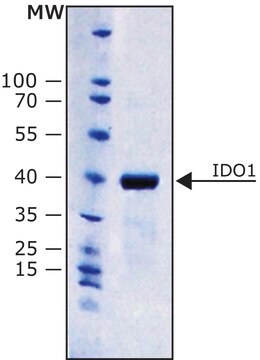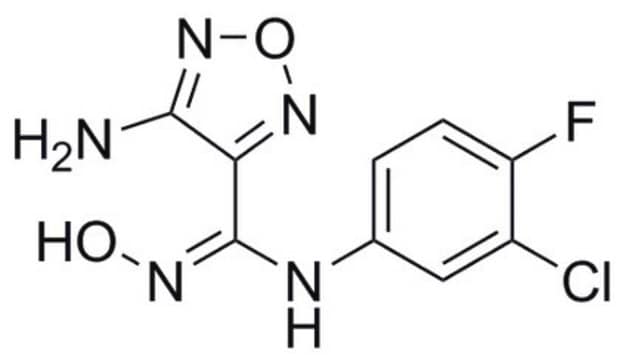1. There is no specific recommended amount of protein per well for testing. It is best to optimize this by testing a range of dilutions to determine the most effective concentration for the specific sample being used.
2. The assay buffer does not contain any inhibitors.
3. Mild sonication can be used instead of a dounce homogenizer, with low amplitude and short pulses, while keeping the samples on ice throughout the sonication process.
Wichtige Dokumente
MAK356
Indoleamine 2,3-Dioxygenase 1 (IDO1) Activity Assay Kit
sufficient for 100 fluorometric tests
Synonym(e):
IDO1 Activity Assay Kit
About This Item
Empfohlene Produkte
Verwendung
sufficient for 100 fluorometric tests
Nachweisverfahren
fluorometric
Relevante Krankheit(en)
immunological diseases; cancer
Allgemeine Beschreibung
Leistungsmerkmale und Vorteile
Eignung
Prinzip
Signalwort
Warning
H-Sätze
P-Sätze
Gefahreneinstufungen
Met. Corr. 1
Lagerklassenschlüssel
8A - Combustible corrosive hazardous materials
Flammpunkt (°F)
188.6 °F
Flammpunkt (°C)
87 °C
Hier finden Sie alle aktuellen Versionen:
Analysenzertifikate (COA)
Die passende Version wird nicht angezeigt?
Wenn Sie eine bestimmte Version benötigen, können Sie anhand der Lot- oder Chargennummer nach einem spezifischen Zertifikat suchen.
Besitzen Sie dieses Produkt bereits?
In der Dokumentenbibliothek finden Sie die Dokumentation zu den Produkten, die Sie kürzlich erworben haben.
-
1. What is the recommended concentration of protein to use per well?
2. Do the IDO kit buffers contain inhibitors for endogenous enzymes that may metabolize N-formylkynurinine?
3. Will anything in the kit be affected by using sonication instead of a dounce homogenizer?1 answer-
Helpful?
-
Active Filters
Unser Team von Wissenschaftlern verfügt über Erfahrung in allen Forschungsbereichen einschließlich Life Science, Materialwissenschaften, chemischer Synthese, Chromatographie, Analytik und vielen mehr..
Setzen Sie sich mit dem technischen Dienst in Verbindung.








